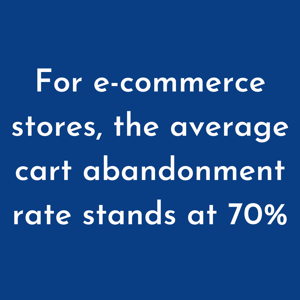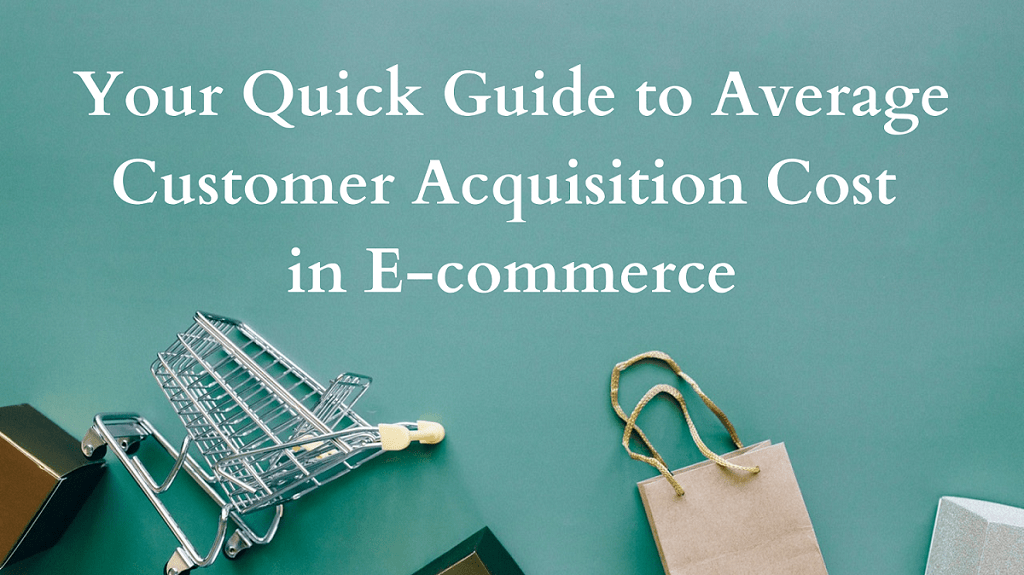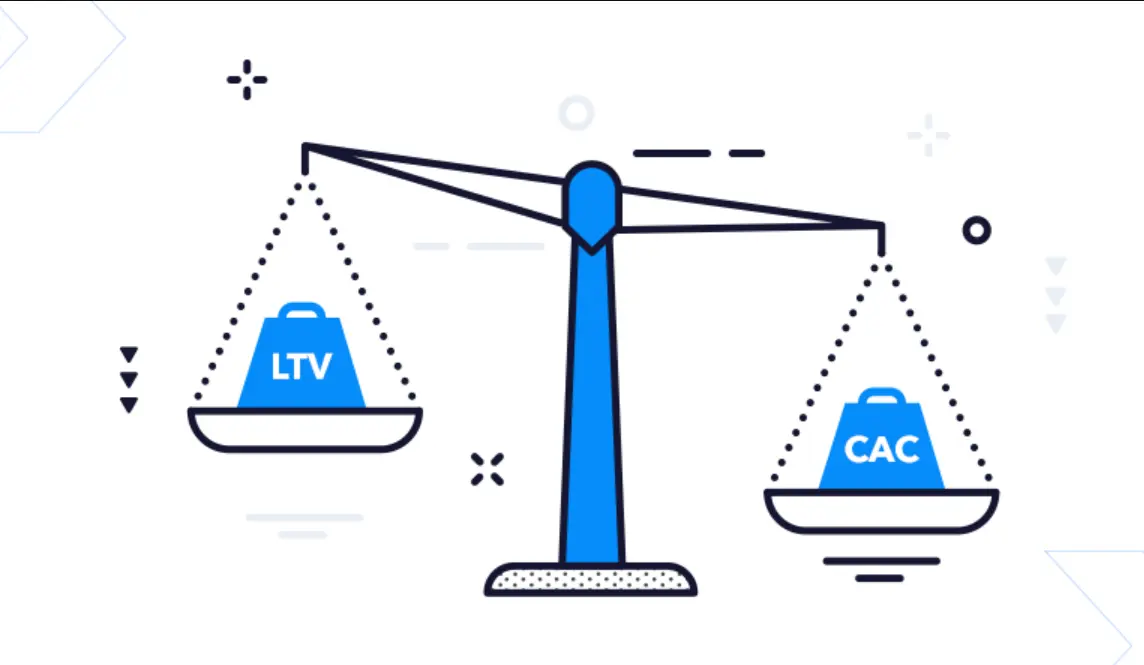8 Customer Acquisition Metrics You Need to Start Tracking Today
Any e-commerce business on the planet knows that they need data to see if their efforts and ads are panning out – or not.
But this data alone isn’t enough. Having a pretty chart or a figure at the end of the month isn’t enough.
Instead, you have to look at this data based on metrics and key performance indicators (KPIs) that you set down so you can decide if, at the end of a period (week, month, quarter, or year) you’ve performed well or not.
Using e-commerce KPIs and metrics, online businesses can decide if the ad they’re running has resulted in a positive return on ad spend (ROAS) or not.
In this article, we will discover the most important user acquisition metrics to track:
- 1. CAC
- 2. Customer lifetime value (CLV)
- 3. Churn rate (or customer churn)
- 4. Click-through rate (CTR)
- 5. Conversion rate
- 6. Lead generation rate
- 7. Time to conversion rate
- 8. Shopping cart abandonment rate
These KPIs tell you whether you should continue with their marketing and social media strategy or if you should try something else.
One of the important metrics a business, especially those just starting out, needs to measure is the customer acquisition cost (CAC).
But it’s not the only one that measures the value of acquiring a new customer and how it impacts your business.
In this article, we’re going to focus on the top customer acquisition metrics that e-commerce businesses need to consider and how to calculate them.
Customer acquisition versus retention
Many businesses fall into the trap of focusing on acquiring new customers.
While this is important at almost every stage of a business, it’s even more pressing to retain those customers you’ve acquired.
You see, acquiring new customers only to have them leave the next day is like throwing your money away.
However, the solution to this is after acquiring new customers, you want to retain them. That is, you want them to keep coming back to your store and become regular customers.
Further reading: Here’s What You Need to Know About the Difference Between ROI and ROAS
There’s lots of data about the benefits of customer retention. But chief among them is that it’s easier to sell to a retained customer than it is to sell to a new one.
According to the Harvard Business Review (HBR), the probability of selling to current customer is around 60% to 70%, whereas the probability of selling to a new customer drops to 5% to 20%.
Moreover, data by Econsultancy shows how much businesses rely on customer acquisition while overlooking retention.
Nearly 44% of businesses said they focused on acquiring new customers, while only 18% said they focused on customer retention.
That said, customer acquisition is part of any business strategy.
E-commerce stores that are just starting out have to focus on acquiring new customers, whereas those who have been around for some time are able to divide their marketing budget between acquisition and retention.
What is CAC?
Customer acquisition cost (CAC), also known as cost per acquisition (CPA), is a metric that measures the cost incurred by a business to attract and acquire a new customer.
Not only does CAC involve money spent on advertising but also how much you spend on manufacturing, producing, storing, and shipping your products.
In addition, sales and marketing costs, subscriptions for marketing purposes, and staff or agency costs should be included in your CAC calculation.

CAC is also a good measure of a store’s or company’s growth as it shows how many new customers were added.
That said, it’s important to look at CAC within a set of other metrics and KPIs such as conversion rate and churn rate, which we’ll get into shortly.
To calculate your store’s CAC, you’ll need to divide your sales and marketing expenses by the number of new customers.
Important customer acquisition metrics to track
1. CAC
We’ve already mentioned what CAC is and how to measure it.
As an e-commerce store, you’ll be working to attract new customers.
So, when running a marketing campaign, you’ll want to look at your average customer acquisition cost to see how much you’re paying to acquire customers compared to how much these customers are spending in your store.
2. Customer lifetime value (CLV)
This is a metric that measures the value of a customer’s relationship with a business.
Customer lifetime value is an important customer acquisition metric because different customers have different lifetime values.
In addition, you want to attract customers who have a higher CLV and accordingly make your customer acquisition efforts worth it.
Despite its importance, only 42% of companies “can accurately measure” their CLV.
To measure CLV, you’ll want to multiple the average value per purchase by the number of times the customer will buy from you each year by the average length of that customer’s relationship with your business in years.
The CLV formula looks like this:
CLV = average value of a purchase X number of times the customer will buy each year X average length of the customer relationship (in years).
This means that if you have a customer who spends $1,000 every month and is likely to remain a customer for 3 years, they’d have a CLV of $36,000.
You’d multiply $1,000 x 12 (months per year) x 3 = $36,000.
3. Churn rate (or customer churn)
Regardless of how amazing your product is or how many loyal customers you have, there are bound to be some dissenters. These are the customers who leave your store over time.
To measure the average number of customers who abandon your business, you’ll want measure your churn rate.
To calculate your churn rate, you’ll need to divide the total number of customers lost over a certain period of time by the total number of customers at the beginning of the same period.
Here’s what the formula looks like: (Source)
Total customers lost in a time period / Total customers at the beginning of the time period = %
“The time period duration is up to you—just make sure it’s consistent. For example, if you lost 50 customers in one month and started with 1,000 customers, your churn rate would be 0.05, which is equal to 5%,” explains ROI Solutions.
4. Click through rate (CTR)
To drive traffic to your website, you need to have created an ad or sent an email, or done something for potential customers to click and land on your page.
The ratio of clicks is called a click-through-rate (CTR). If you’re doing email marketing, the ratio is called Email CTR and is an important measurement in your campaigns.
To calculate your CTR, you need to divide the number of clicks to your ad by the number of impressions (how many times your ad was shown).
CTR = clicks ÷ impressions = %
So if you get 20 clicks to your and 100 impressions, the CTR would be 20/100 = 0.2 or 20%.
5. Conversion rate
Another important customer acquisition metric is the conversion rate.
When you create an ad that sends traffic to your website, not everyone who clicks your ad will make a purchase.
However, those who do complete the purchase are considered conversions. And calculating the average number of conversions means calculating your conversion rate per ad campaign.

These conversions are considered acquired customers, and the next step is to work on retaining them.
To measure your conversion rate, you’ll want to divide the number of conversions by your total number of visitors.
Conversion rate = Number of conversions / Total number of visitors
For example, if you got 10,000 website visitors from an ad campaign, which resulted in 1,000 conversions. The conversion rate would be 10%.
It’s worth noting, however, that not all conversions mean customers making a purchase. For some, a conversion can be downloading an e-book, filling a form, or something else.
The important thing is: these people completed the desired action and thereby converted.
Read more about the Top Ecommerce Conversion Rate Optimization Strategies
6. Lead generation rate
As an e-commerce store, you’re likely using multiple channels to attract and acquire customers.
This means that your lead generation rate will differ from one channel to another.
This is based on the type of product you’re selling and the type of leads you’re attracting. The lead generation rate will show you which channels are outperforming others.
So when you look at your customer acquisition metrics from your different channels, the lead generation rate will help you see each channel’s performance and decide which platform or channel to focus on over others.
Here’s the lead generation rate formula:
Lead generation rate = number of conversions divided by number of visitors divided by 100
Let’s say you ran an ad, got 10,000 visitors, of which 100 people converted.
Using the formula, 100/10,000 x100 = 1% lead generation. If you had 500 conversions: 500/10,000 = 5% and so on.
It’s crucial to remember that your lead generation rate will vary from one traffic source to another.
7. Time to conversion rate
The time to conversion is one of those often overlooked customer acquisition metrics. It measures the time it takes a lead to decide to convert and make a purchase.
Time to conversion varies significantly between different customers. Some may take seconds or minutes to complete a purchase, while others may take days or even weeks to buy from your store after clicking your ad or email link.
“This metric doesn’t just offer insight on the time leads spend in the funnel; it also reveals your average sales cycle which will help you understand whether you need to add or reduce points of contact before going in for the sale,” explains Commence.com
The time to conversion metric is useful for B2B companies and businesses as it helps them “decide the points of interaction” they have with their prospects. These points of interaction can include a number of emails within a sequence or an interval of time between pieces of content you produce.
8. Shopping cart abandonment rate
E-commerce businesses regularly see shoppers are likely to adding items to their cart only to leave without completing the purchase.
The shopping cart abandonment rate is therefore part of a store’s customer acquisition metrics because it shows an interested customer who may have gotten distracted and left.
It also means that the cost of acquiring that customer was relatively high because they didn’t convert.

However, there are many reasons why customers abandon carts.
Among those are customers who are merely looking for price comparisons, those doing virtual window shopping, and those who found large shipping fees at checkout, prompting them to leave.
These are just a few of the common reasons online carts are abandoned.
For e-commerce stores, the average cart abandonment rate stands at 70%, according to data by the Baymard Institute.
To calculate your cart abandonment rate, you’ll need to:
- Divide the total completed purchases by the number of shopping carts created. The result would be a Success rate.
- Then you’ll need to subtract the success rate from 1 and multiply it by 100
The first step provides you with the percentage of people who completed their purchase.
Here’s what the formula looks like:
Total completed purchases / Number of shopping carts created = Success rate
(1 – Success rate) x 100
So if you have 100 shopping carts and only 75 of them completed the purchase, your success rate would be 75/100 = 0.75 (or 75%). Then (1 – 0.75) x 100 = 25% abandonment rate.
Conclusion
As you can see, there are many customer acquisition metrics that you need to look at if you’re an e-commerce store. CAC is important but not the only one.
Still, it’s vital to remember that once you begin acquiring customers, you want to reduce your ad spend by retaining those customers. This can be done using a loyalty program, using personalized email marketing, or having a supportive customer support team.



